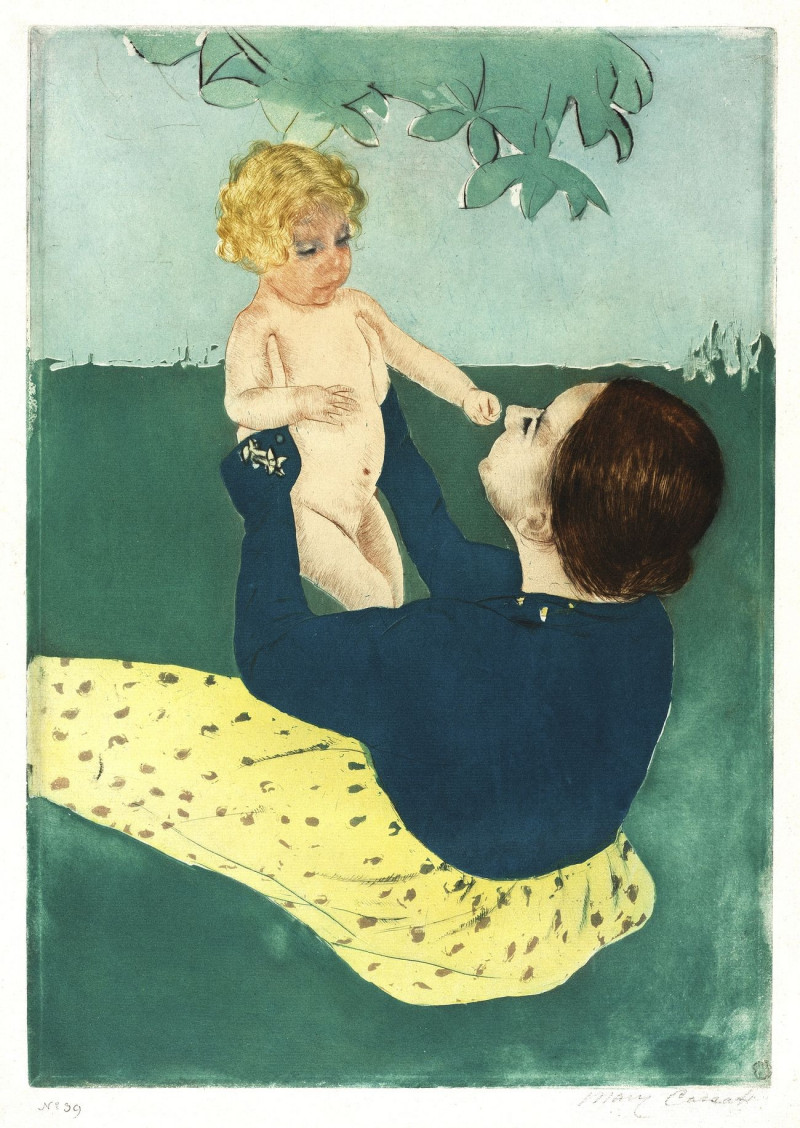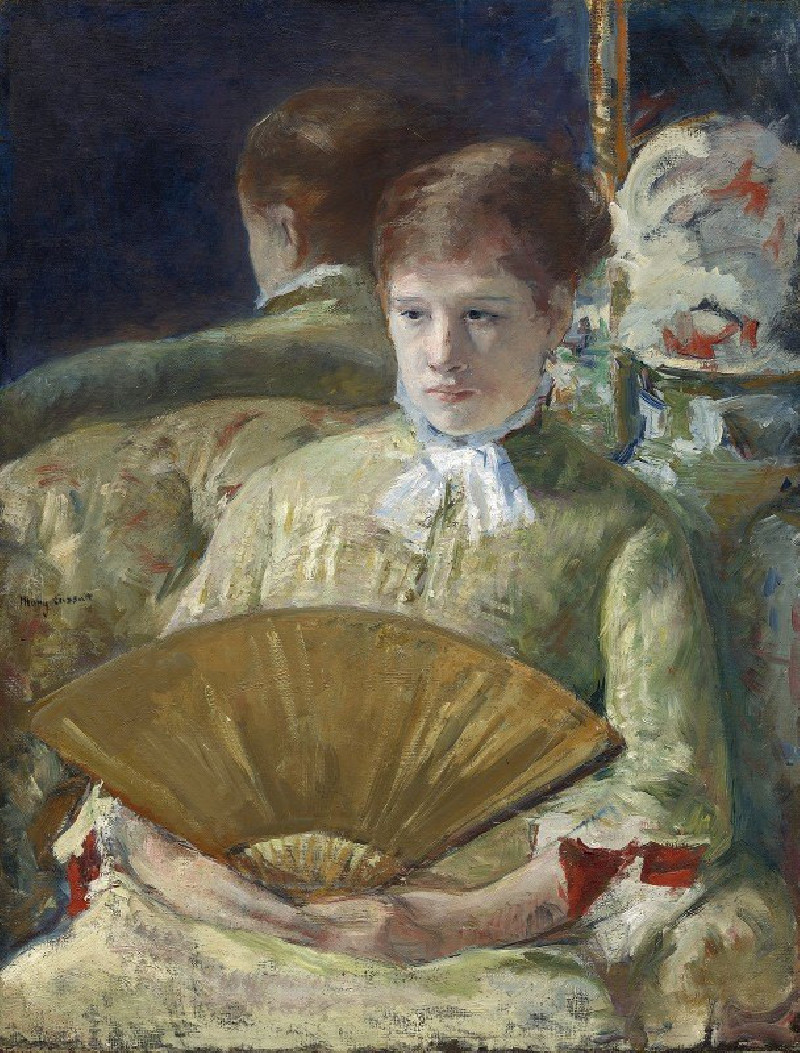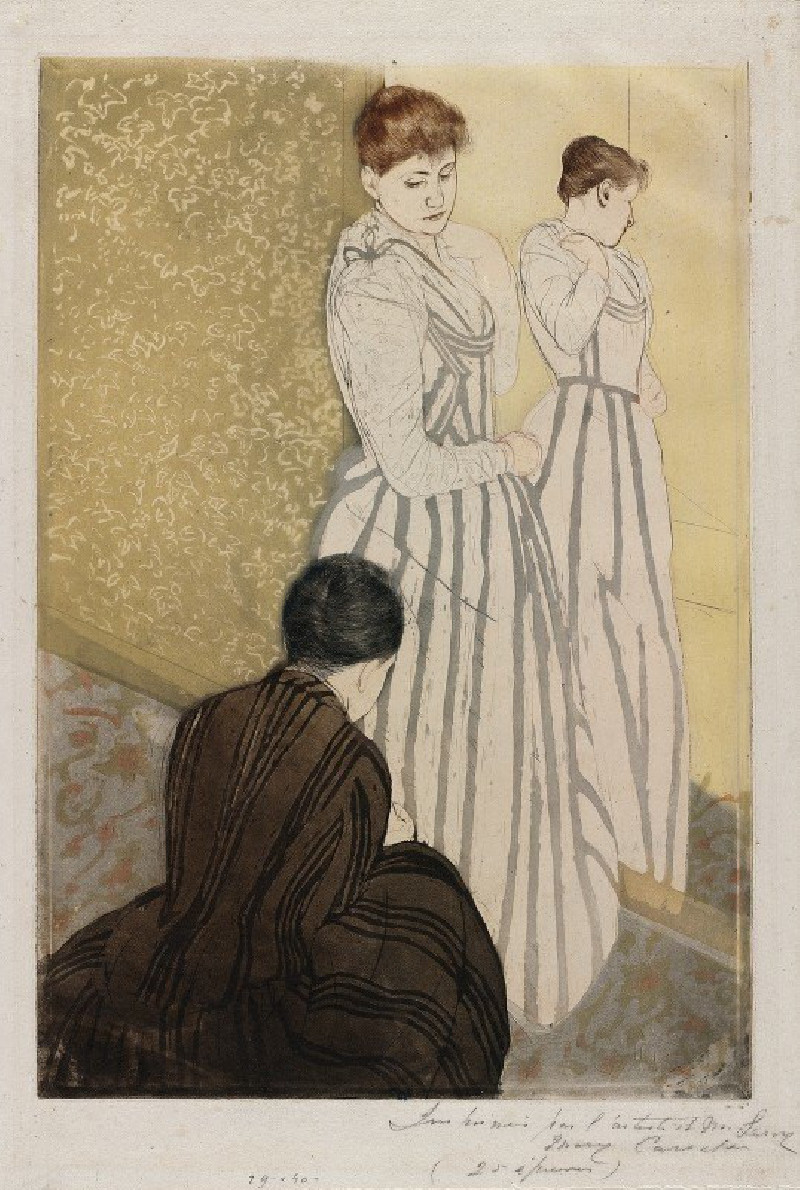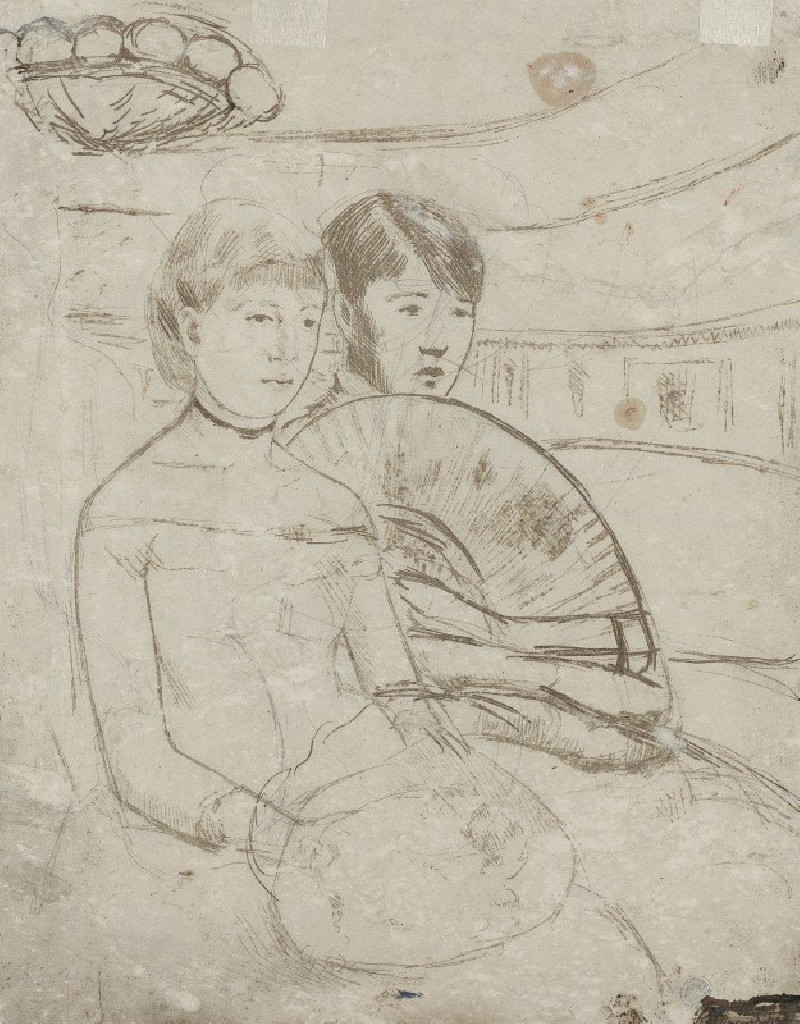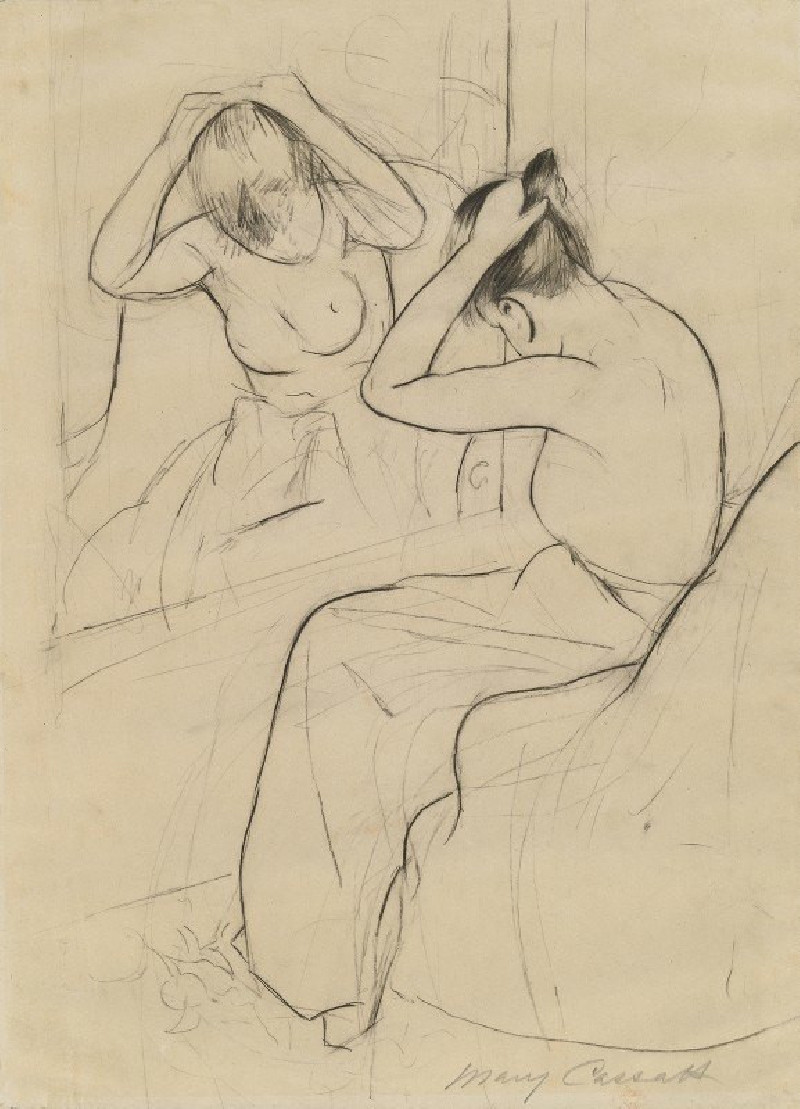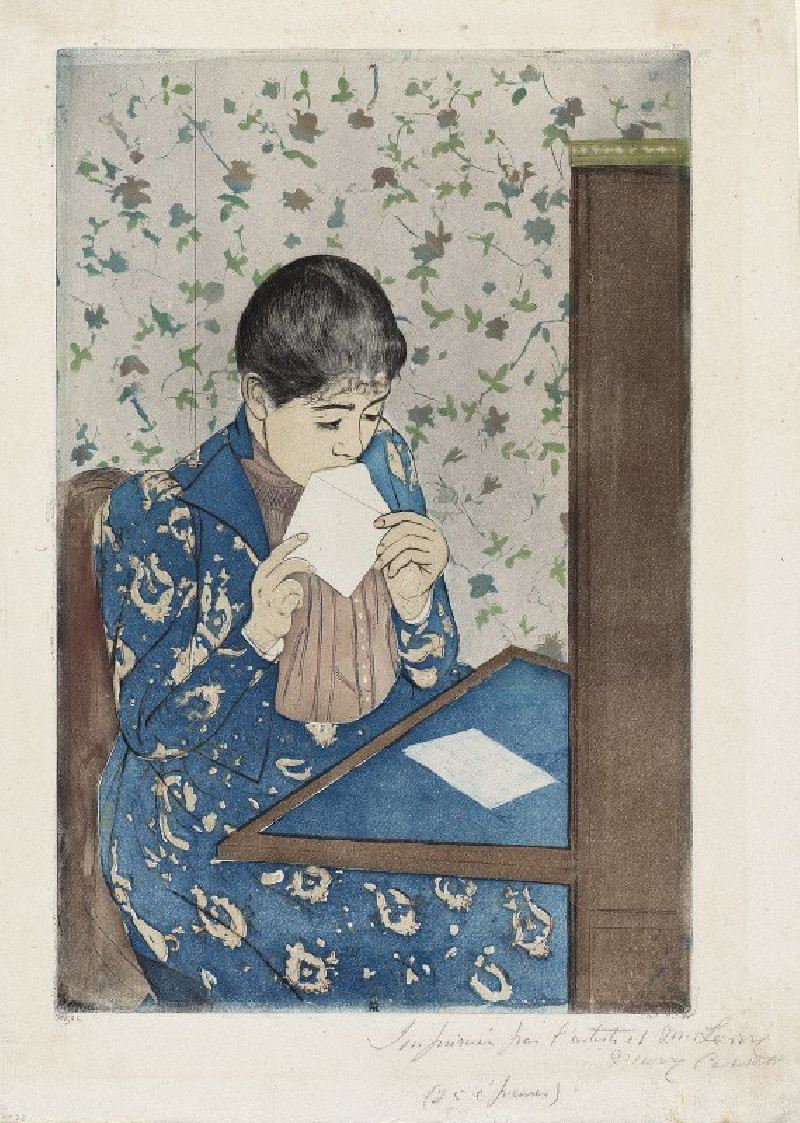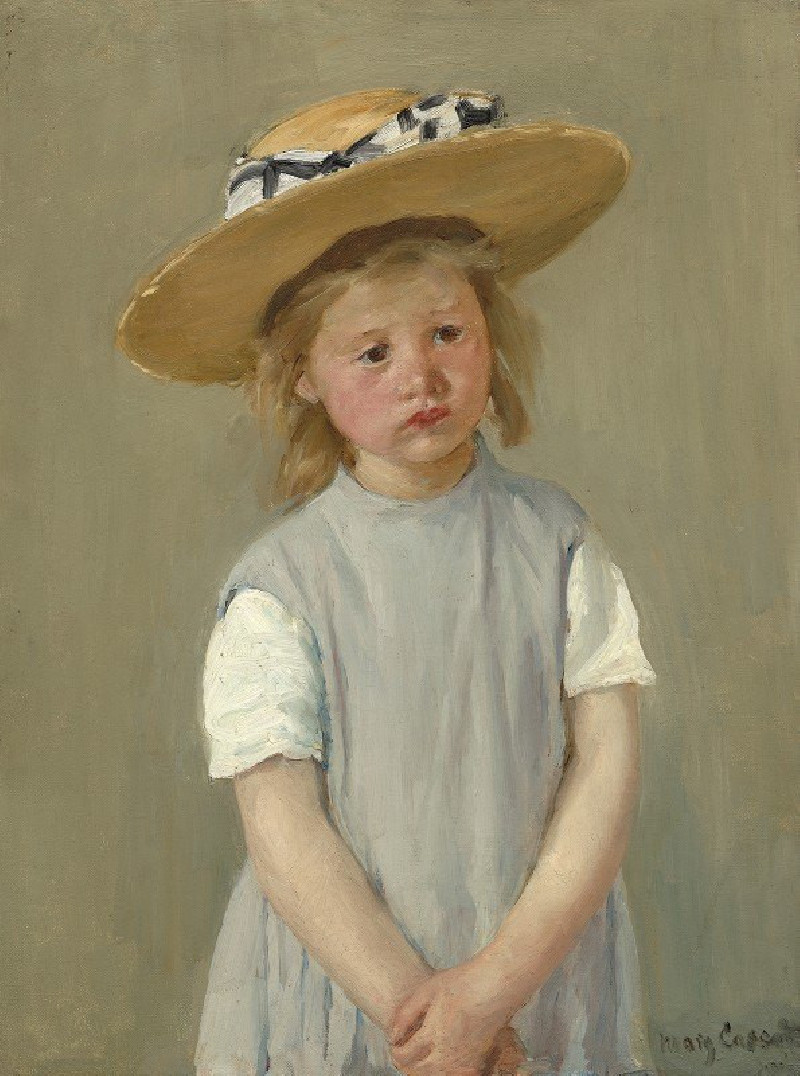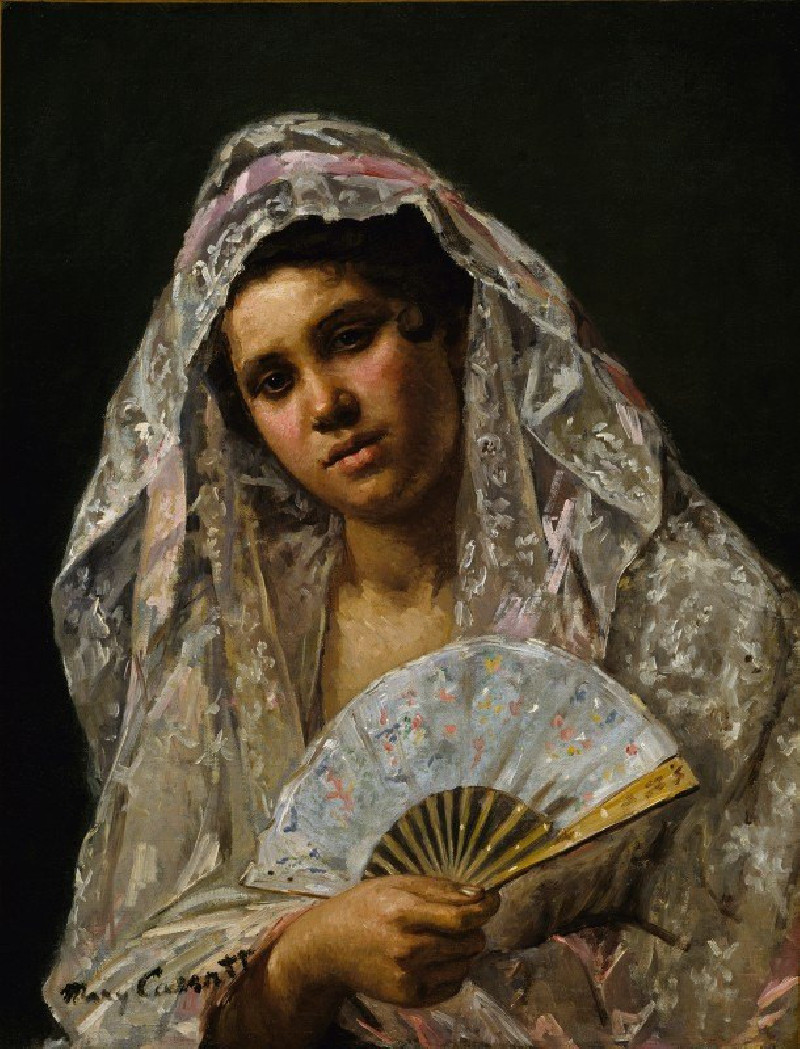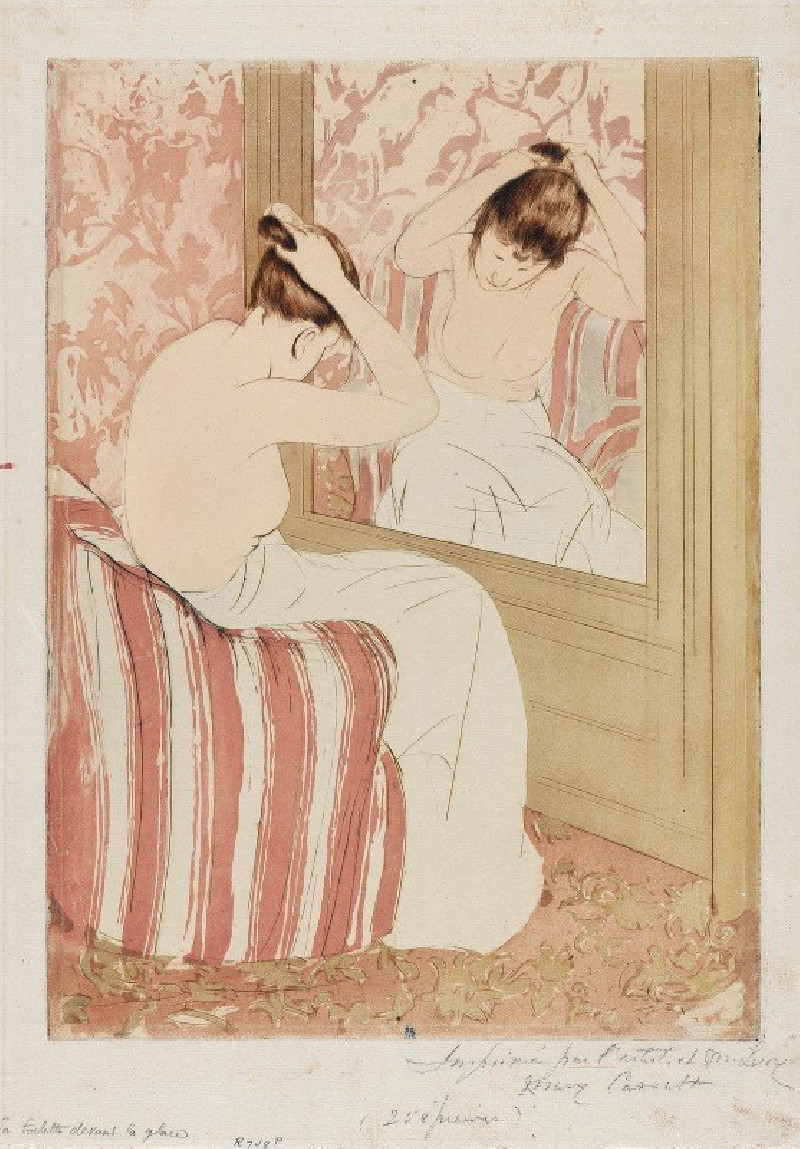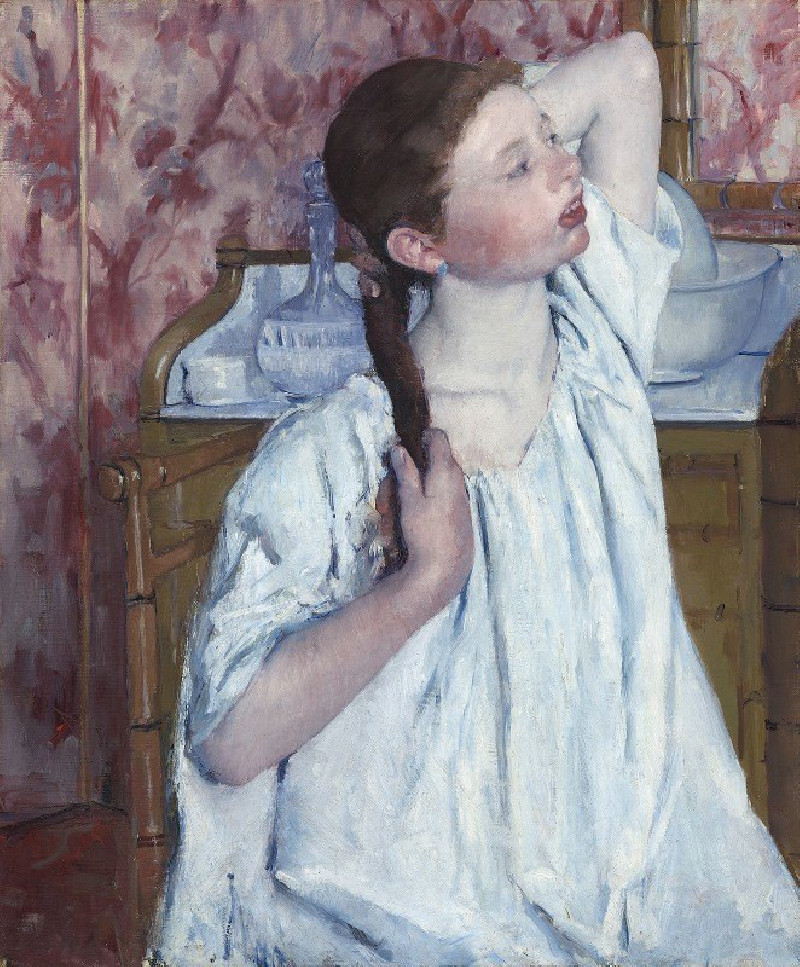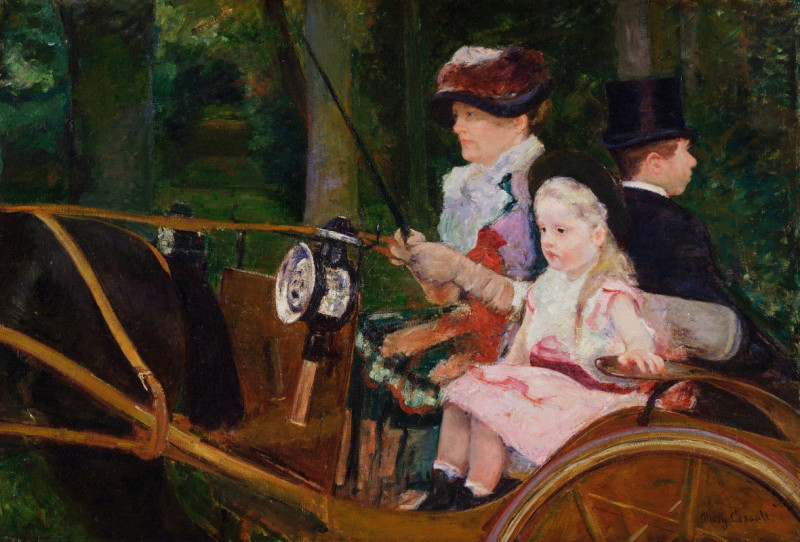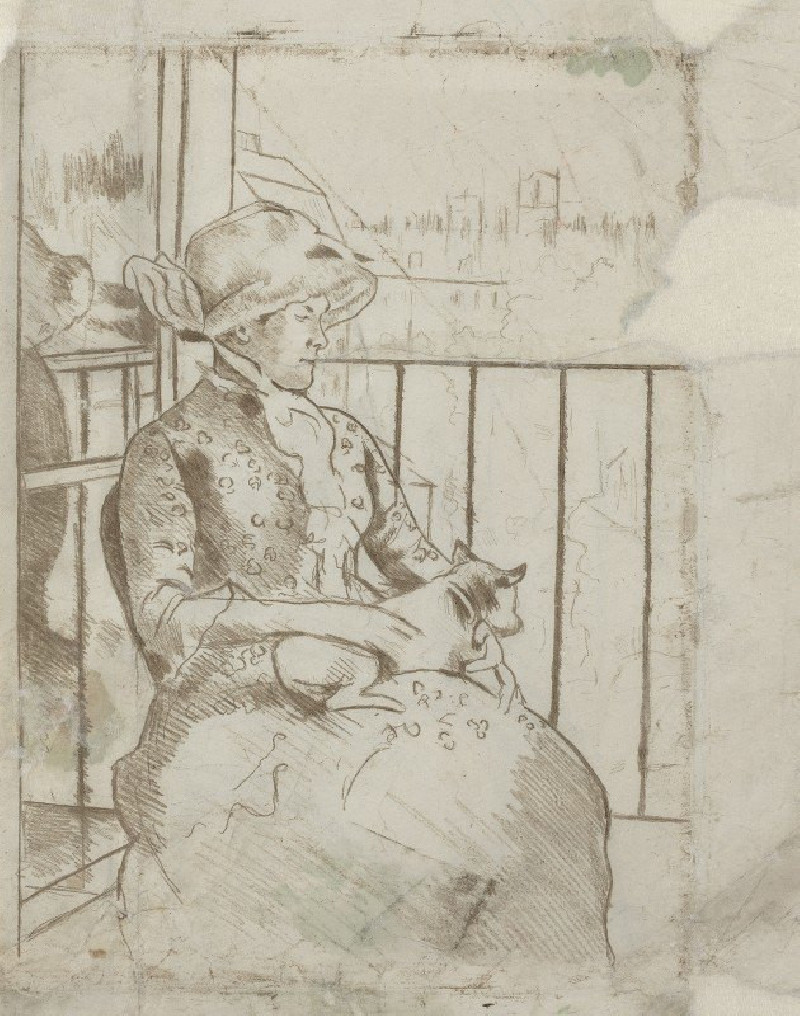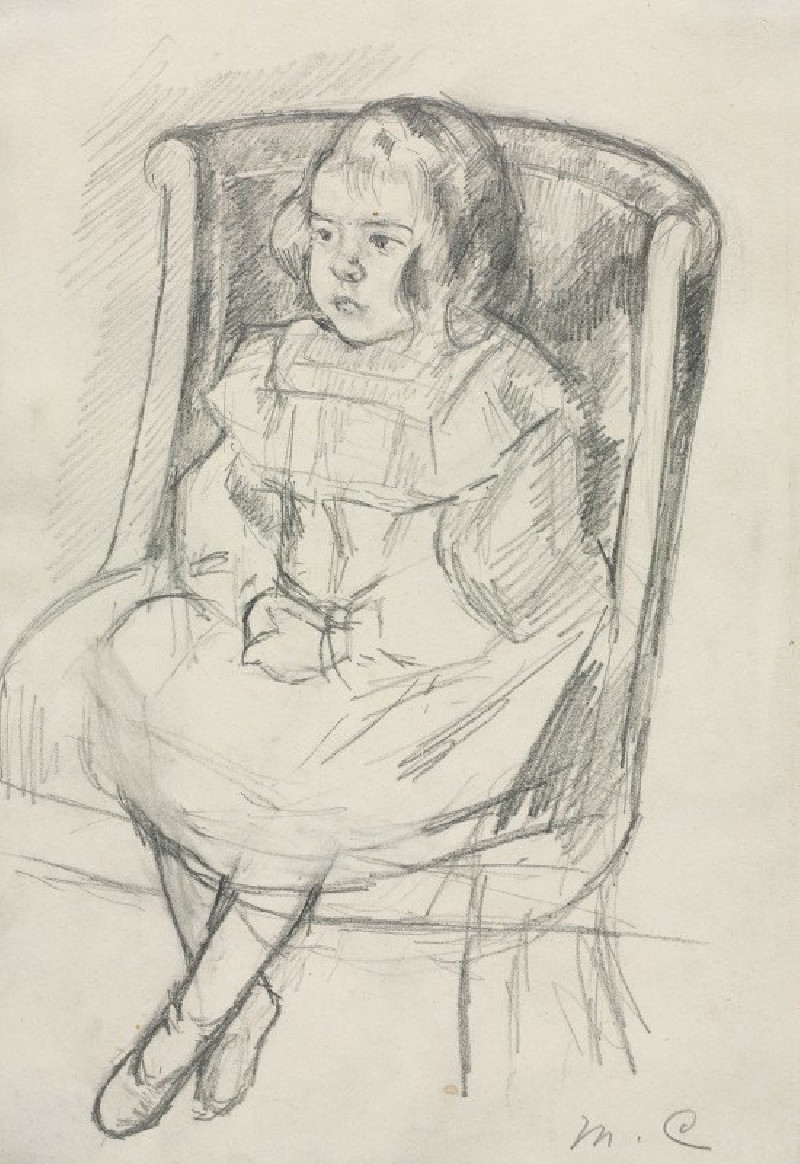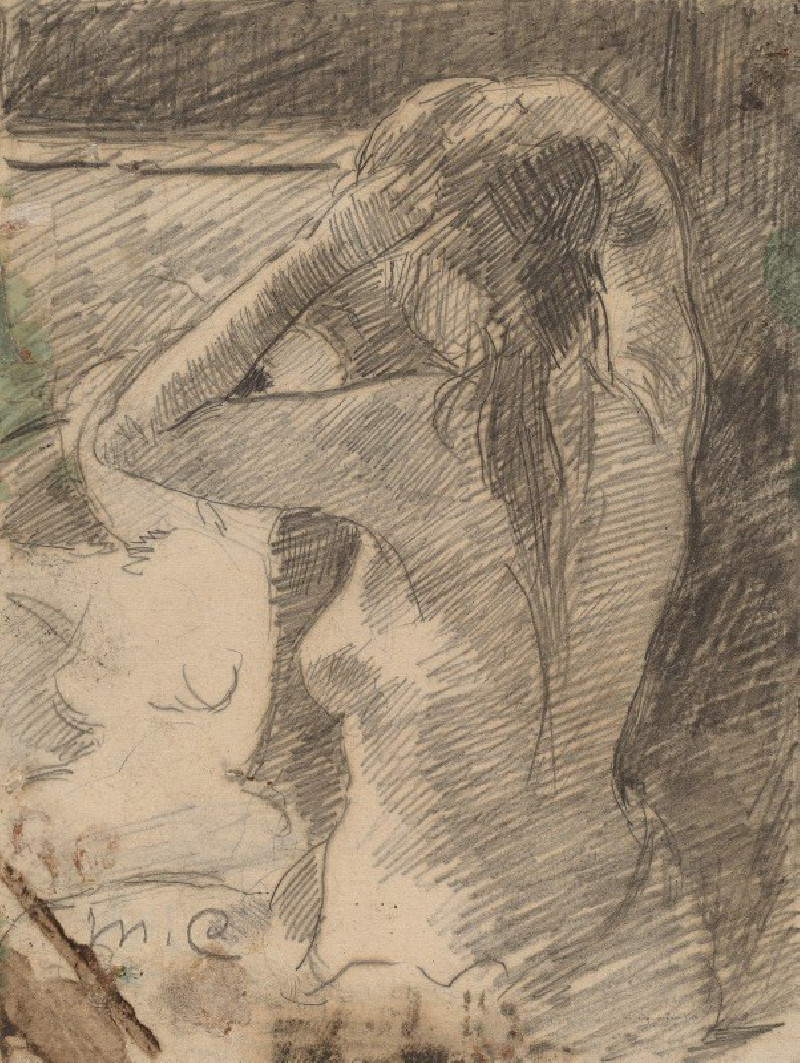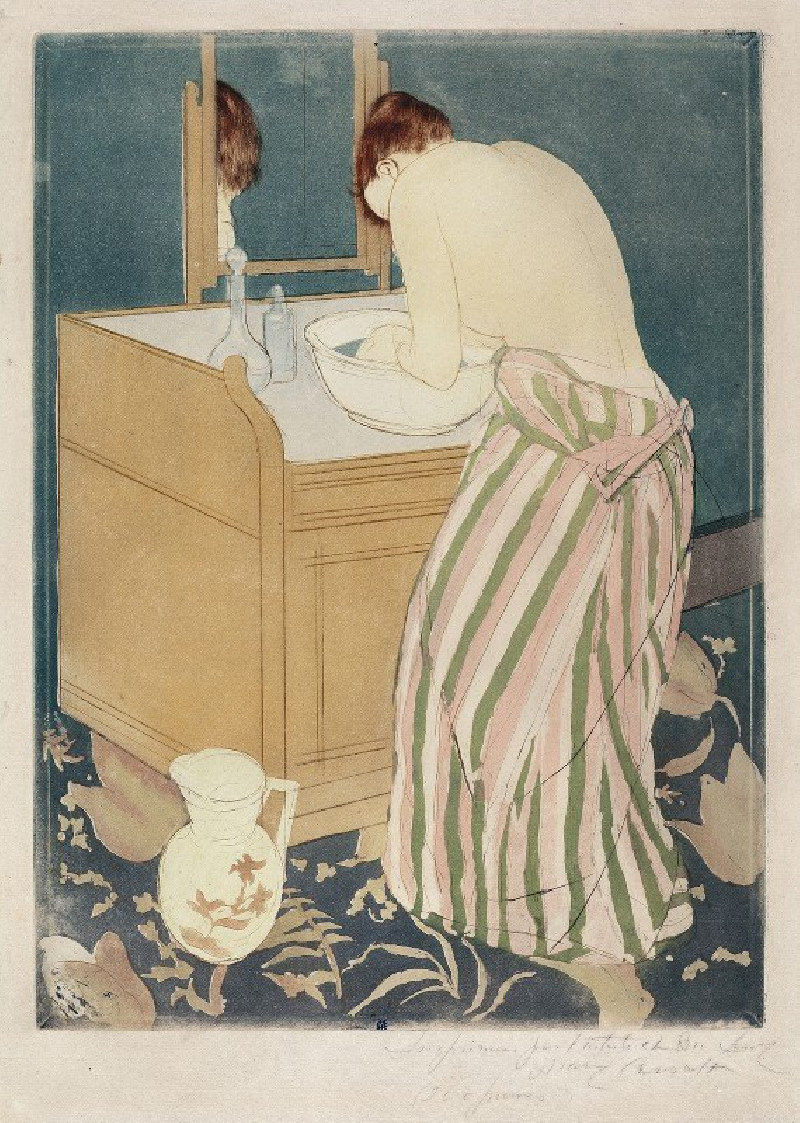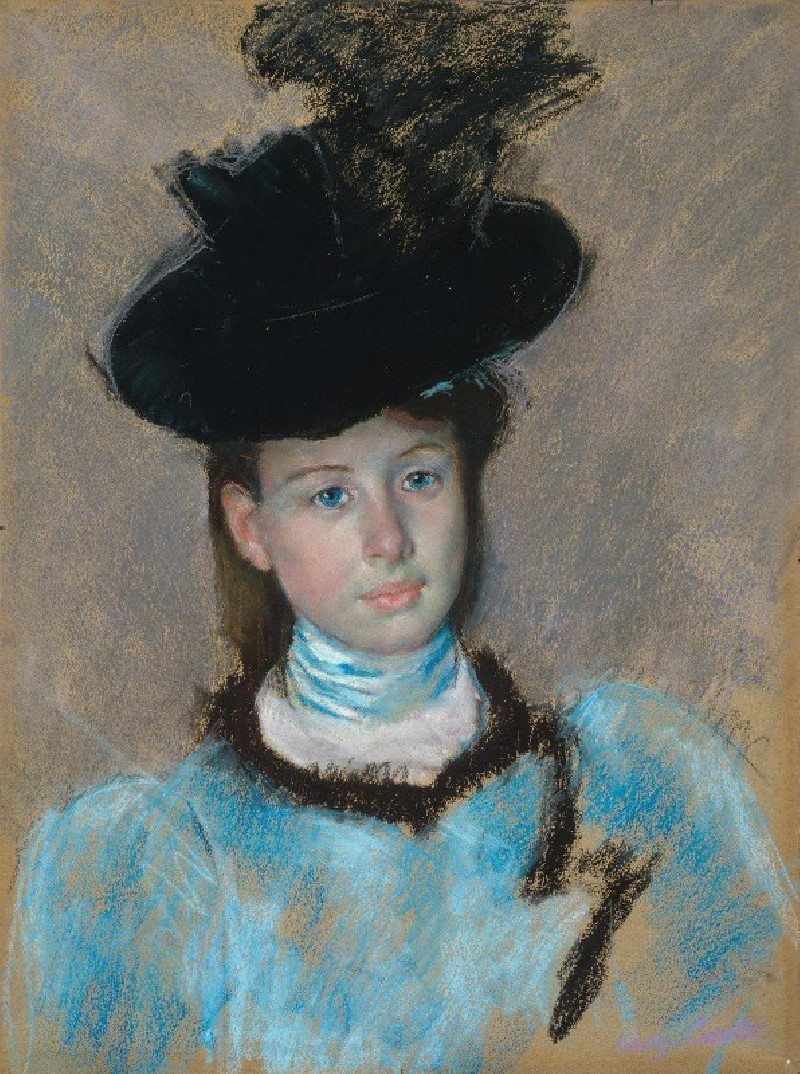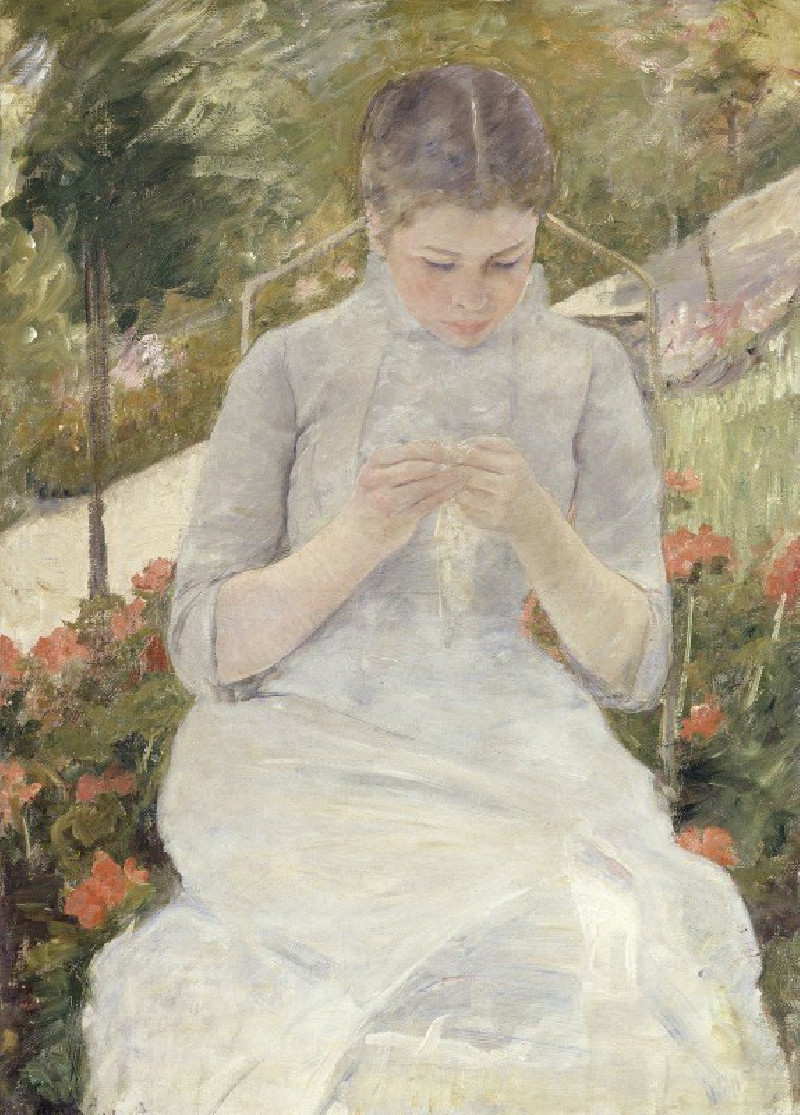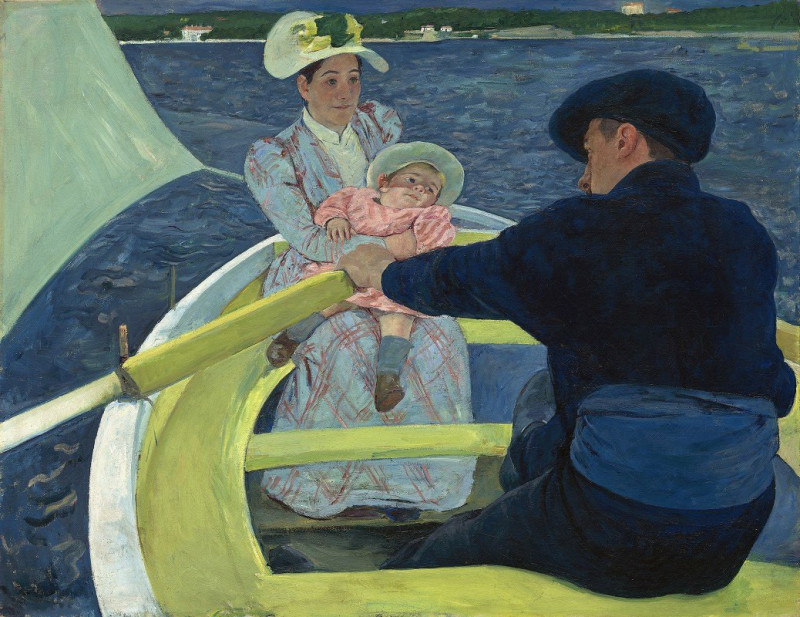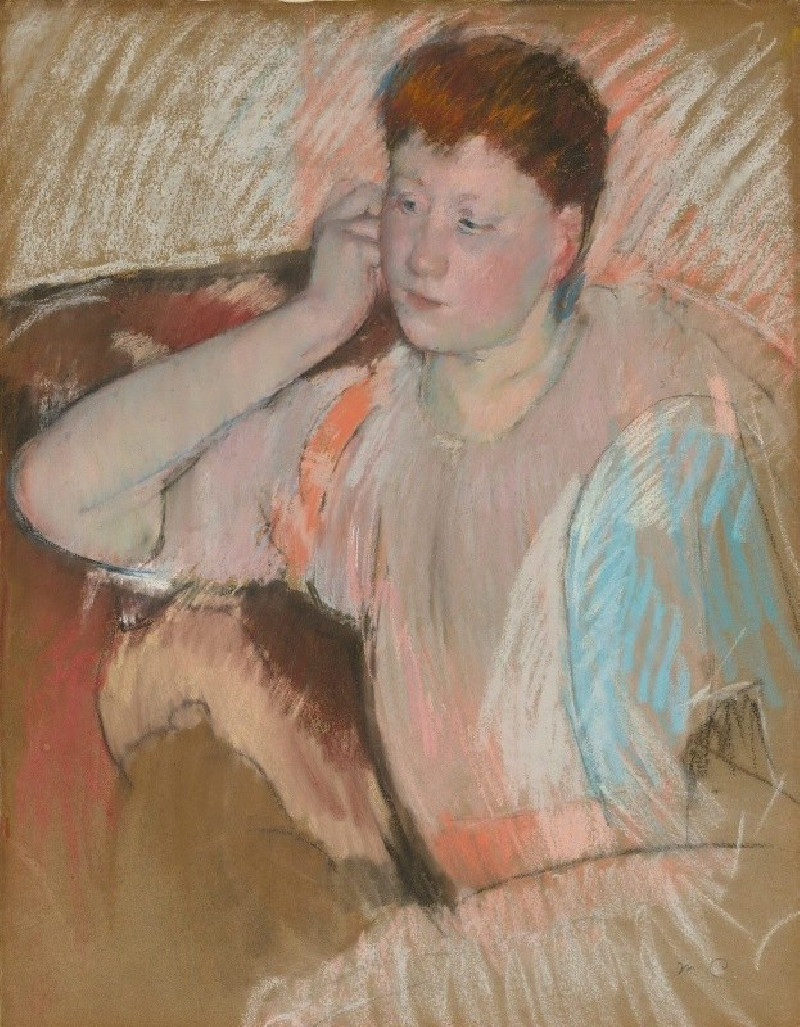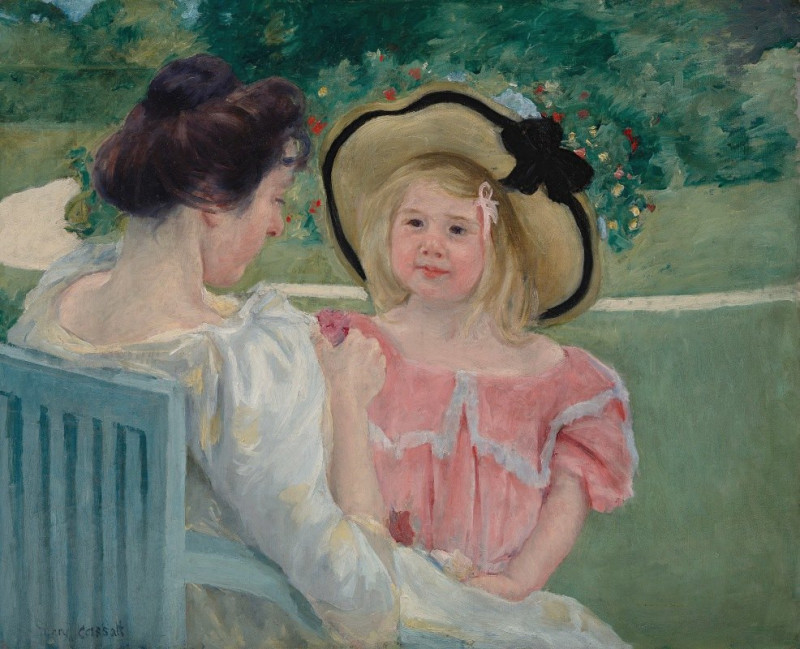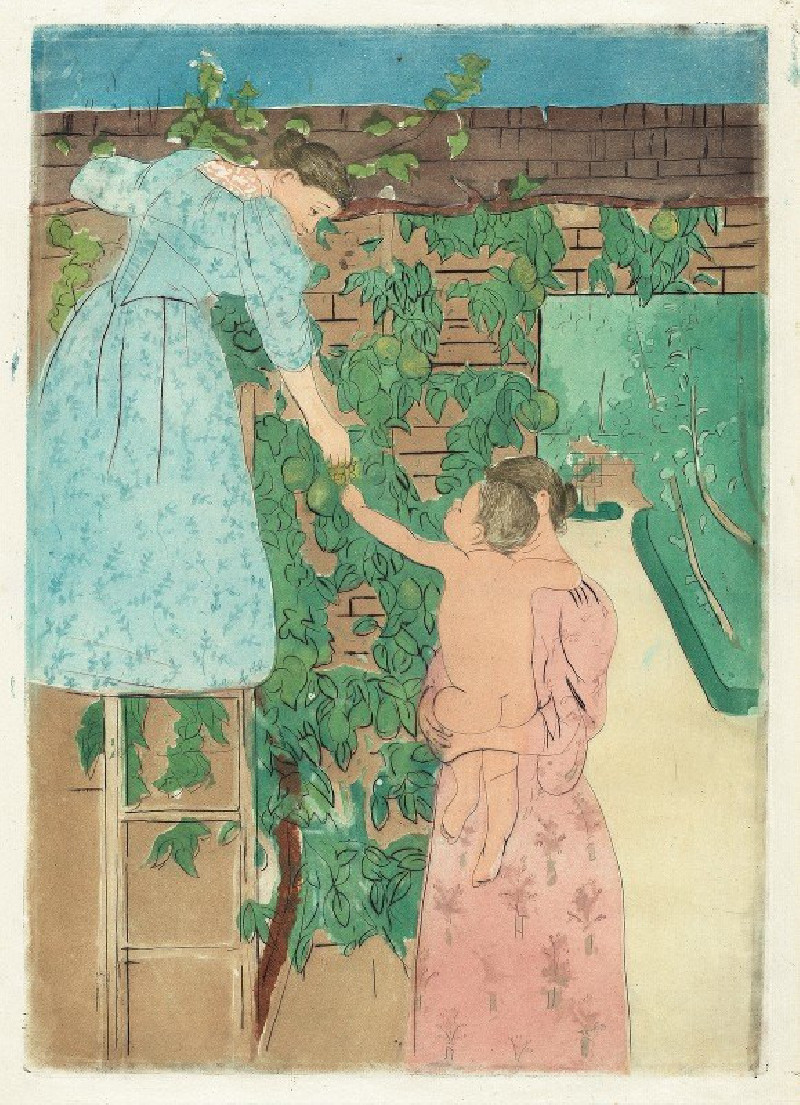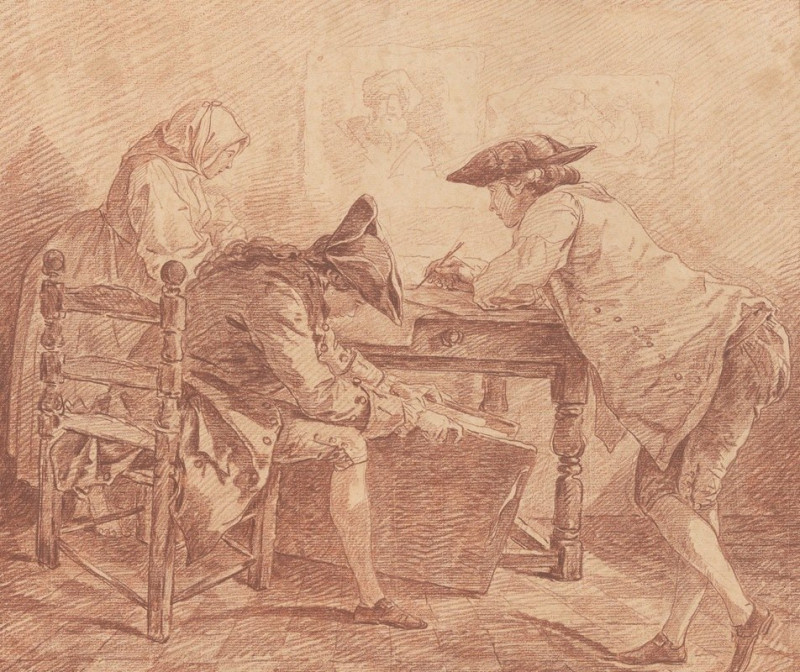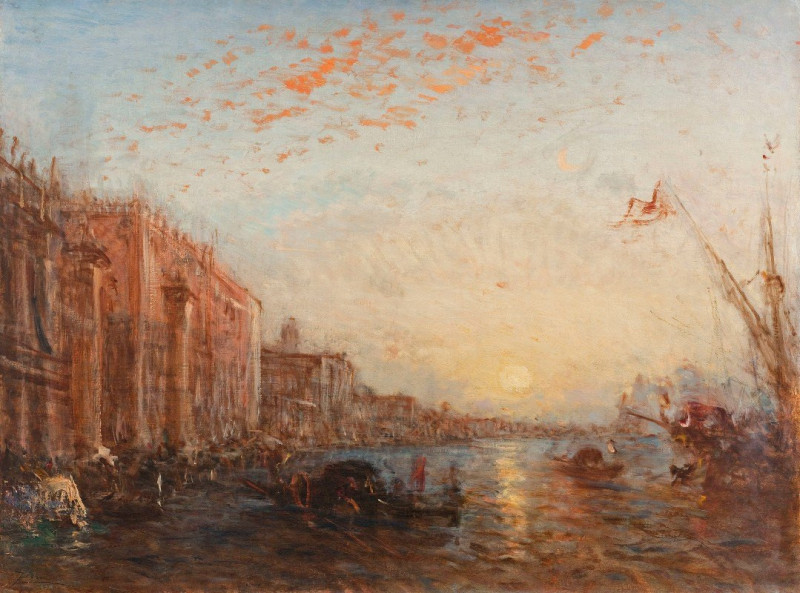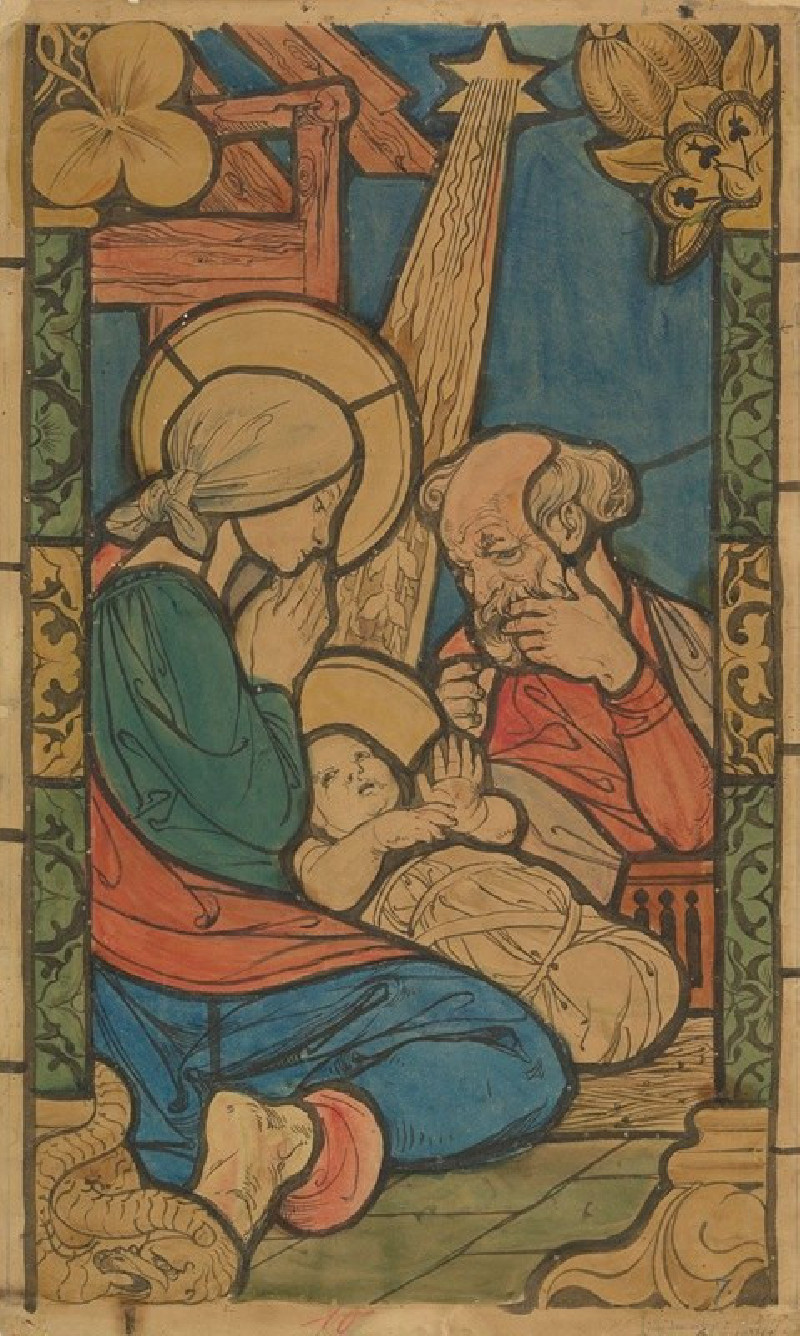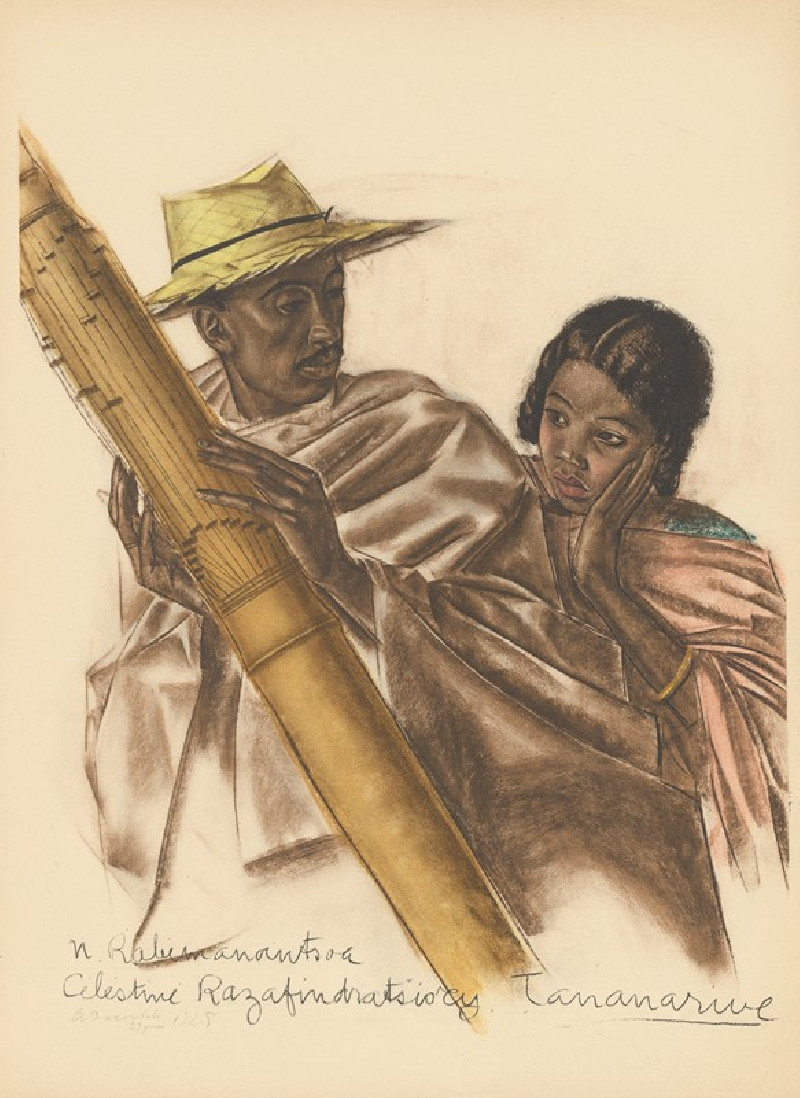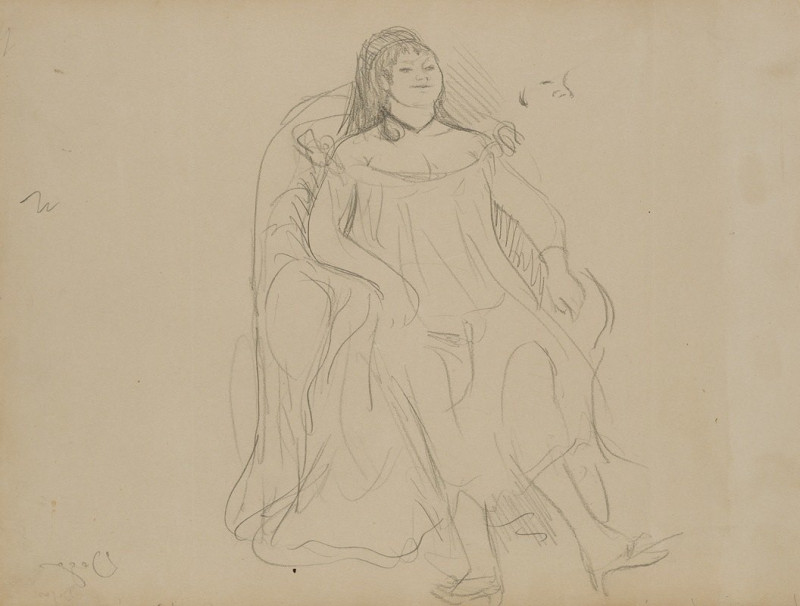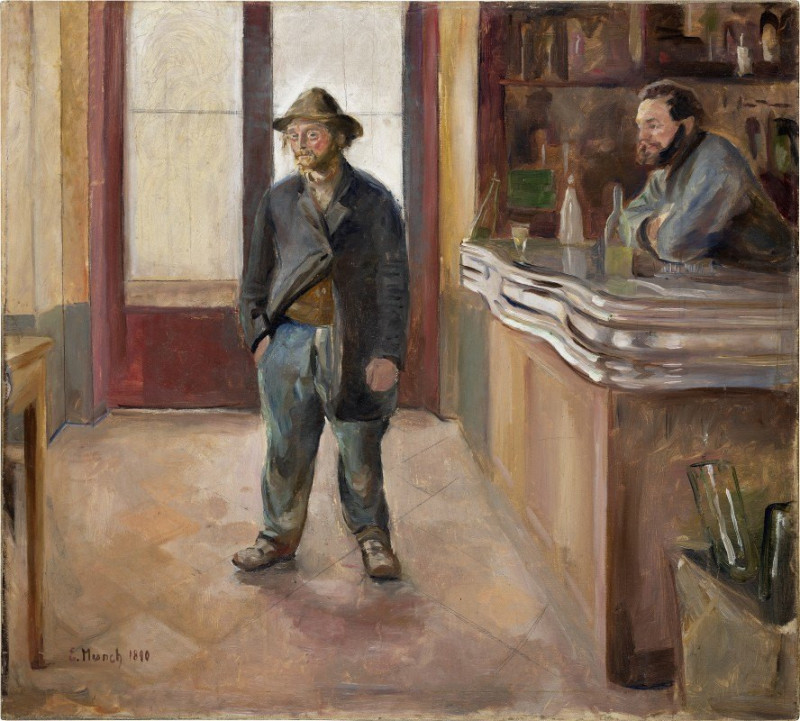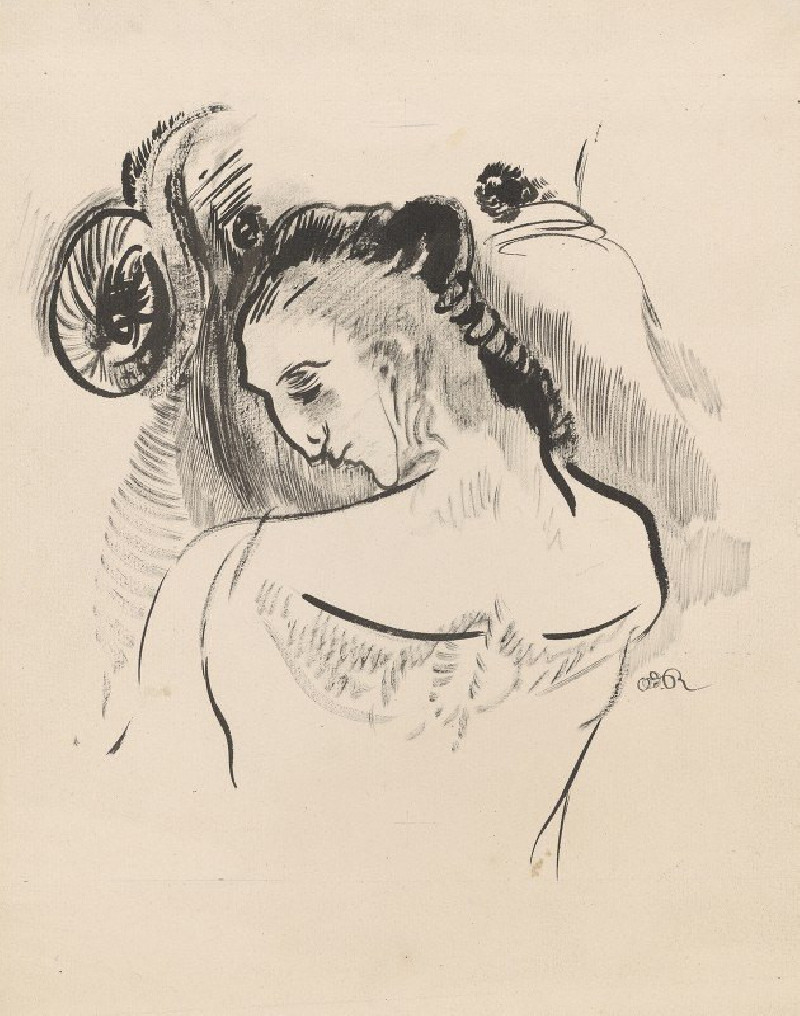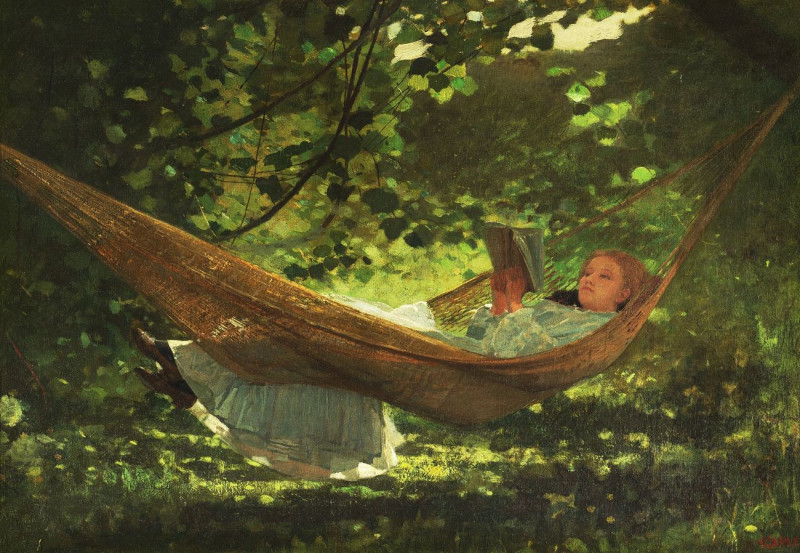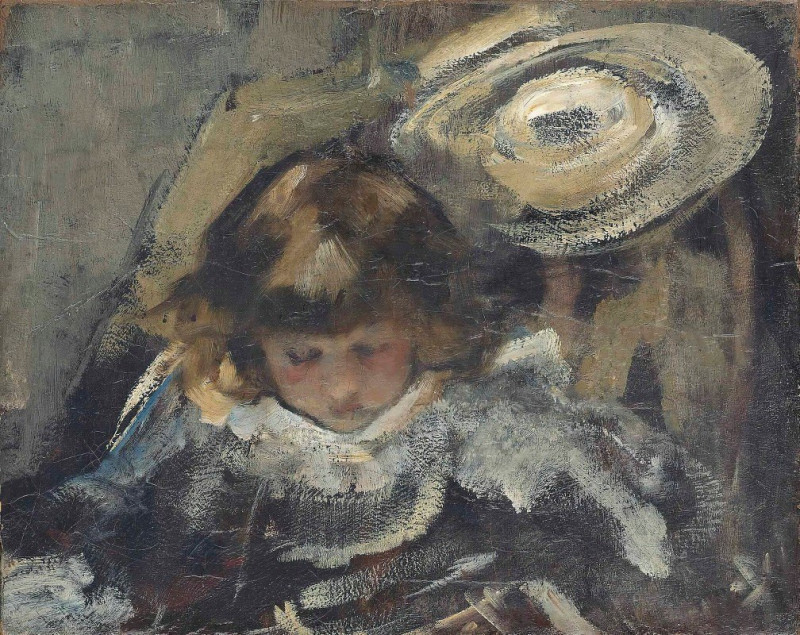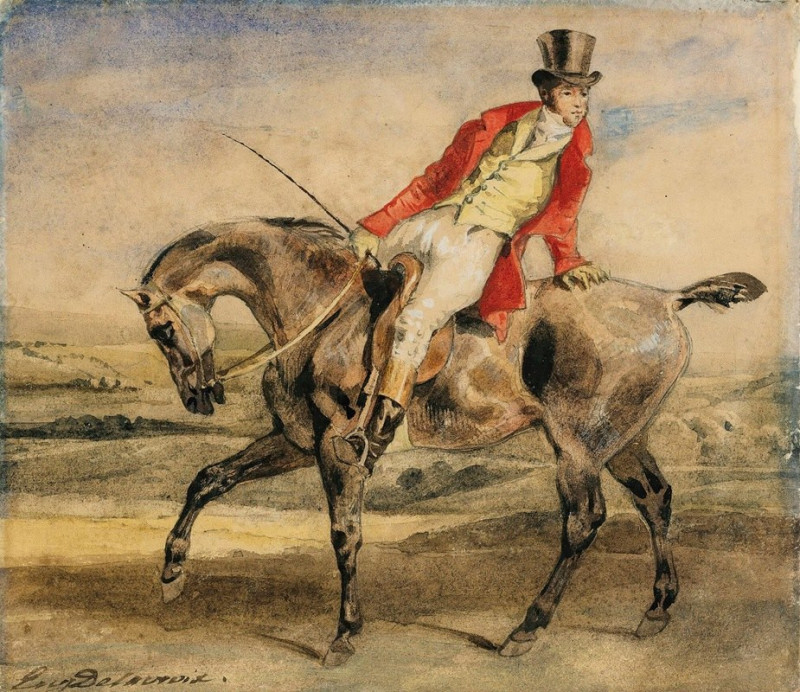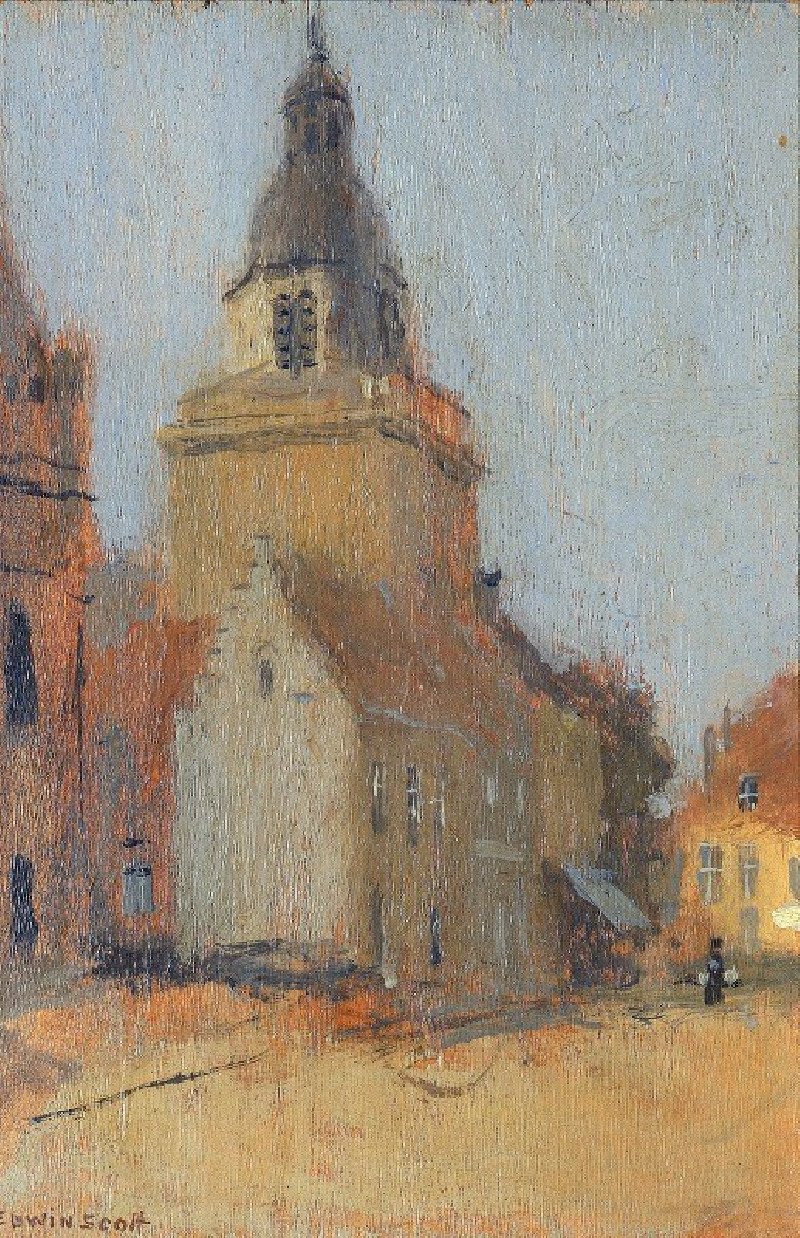Under The Horse Chestnut Tree
Technique: Giclée quality print
Recommended by our customers
More about this artwork
"Under the Horse Chestnut Tree" by Mary Cassatt is a poignant and beautifully rendered piece that captures an intimate moment between a mother and her child. In this painting, the mother, dressed in a deep blue garment, is lying on her back, holding her baby aloft with her knees and hands. The child, who appears to be a toddler with curly blonde hair, is only in a diaper, emphasizing the purity and innocence of early childhood.The background of the setting is a calm green, likely representing the outdoors under the canopy of a horse chestnut tree, as suggested by the title and the faint outlines of leaves in the upper left-corner of the painting. The leaves dangle into the frame, enhancing the feeling of a quiet, shaded outdoor space which envelops the figures in a serene atmosphere.Cassatt's use of color and composition emphasizes the tenderness and connection between the mother and child. The mother's gaze towards her child is filled with love and attention, while the child looks comfortably and confidently into her mother's eyes, portraying a strong bond and mutual adoration. The choice of a simple yet bright palette highlights the figures and their interaction, making them the clear focal point against the more muted background.Overall, this artwork by Mary Cassatt beautifully encapsulates a moment of everyday joy and maternal affection, typical of her works that often focus on the social and private lives of women, with particular attention to the bonds between mothers and children.
Delivery
Returns
Mary Stevenson Cassatt was an American painter and printmaker. She was born in Allegheny City, Pennsylvania (now part of Pittsburgh’s North Side), but lived much of her adult life in France where she befriended Edgar Degas and exhibited with the Impressionists. Cassatt often created images of the social and private lives of women, with particular emphasis on the intimate bonds between mothers and children.
She was described by Gustave Geffroy as one of "les trois grandes dames" (the three great ladies) of Impressionism alongside Marie Bracquemond and Berthe Morisot.In 1879, Diego Martelli compared her to Degas, as they both sought to depict movement, light, and design in the most modern sense.

